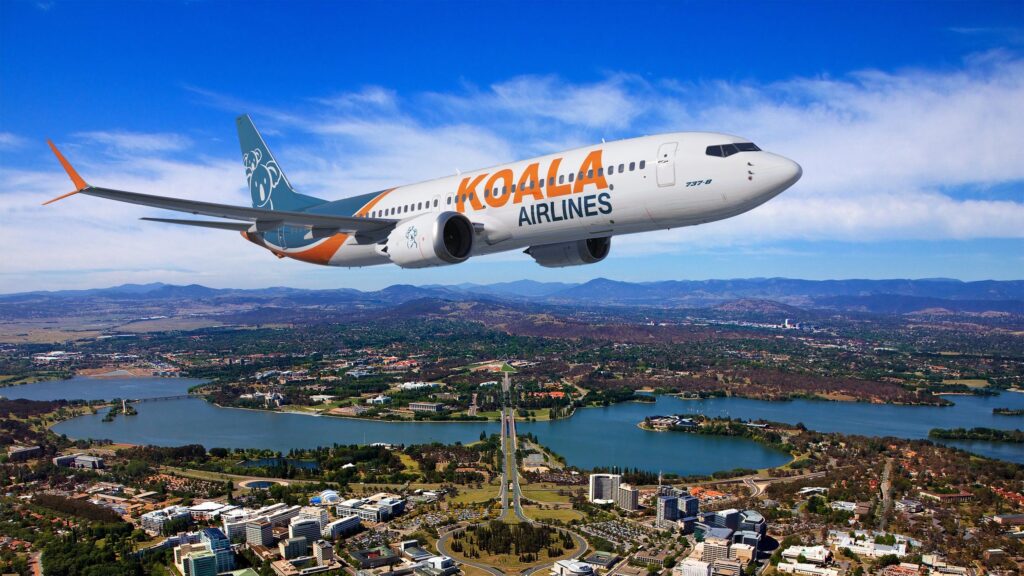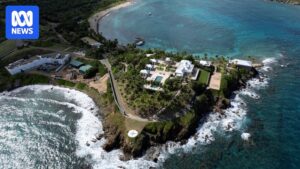
Australia’s newest airline venture, Koala Airlines, has officially confirmed the leasing of three Boeing 737 MAX aircraft, setting the stage for a potential launch by 2026. This strategic move marks a significant step forward for the start-up, which aims to operate a fleet of up to 20 aircraft within its initial years of operation.
Koala Airlines’ Chief Executive Officer, Bill Astling, shared exclusive insights with Australian Aviation, revealing that the airline has successfully obtained its Air Operators Certificate. The first aircraft is expected to arrive by July or August, with operations likely to commence shortly thereafter, potentially before the end of next year.
Strategic Fleet Expansion
Koala Airlines plans a gradual introduction of aircraft to its fleet, a challenging task for small start-ups competing against established major carriers. Despite these challenges, Koala has confirmed three aircraft and is actively pursuing additional acquisitions.
The airline intends to develop a route network focusing on sectors with high demand, primarily targeting tourists and leisure travelers. Unlike the defunct carrier Bonza, which failed to attract passengers on unique point-to-point routes, Koala aims to compete with industry giants like Qantas and Virgin Australia on popular routes between Brisbane, Sydney, and Melbourne.
“We’re going where the demand is – it’s not going to be a Bonza thing. We’ve had a couple of Bonza airports approach us, and we’re looking at that. Essentially, we’re focusing more on tourists and on the tourism industry, rather than any business class or any sort of corporate deals,” said Bill Astling, CEO of Koala Airlines.
Positioning in the Competitive Market
While Koala Airlines has yet to disclose specific routes, the airline is approximately 15 months away from launching operations. Acknowledging the competitive nature of the Australian aviation market, Koala does not plan to engage in price wars with the country’s major carriers, a strategy that led to the downfall of previous airlines like Rex.
Instead, Koala aims to serve as a feeder airline for inbound tourists, establishing agreements with international carriers to facilitate domestic travel from gateway airports. This strategy is particularly focused on the Chinese market, where over 1.8 million tourists visit Australia annually, with a significant majority arriving at Sydney, Melbourne, or Brisbane airports.
Chinese Carrier Presence
- Brisbane International Airport (BNE): Cathay Pacific, China Airlines, China Eastern Airlines, China Southern Airlines
- Melbourne Tullamarine International Airport (MEL): Air China, Beijing Capital Airlines, Cathay Pacific, China Airlines, China Eastern Airlines, China Southern Airlines, Hainan Airlines, Hong Kong Airlines, Juneyao Air, Shenzhen Airlines (from December), Sichuan Airlines, Xiamen Air
- Sydney Kingsford Smith Airport (SYD): Air China, Beijing Capital Airlines, Cathay Pacific, China Airlines, China Eastern Airlines, China Southern Airlines, Hainan Airlines, Hong Kong Airlines, Juneyao Air, Sichuan Airlines, Tianjin Airlines, Xiamen Air
Koala Airlines sees opportunities in providing primary domestic operations to ensure tourists can explore Australia’s unique landscapes and attractions.
Innovative Technology and Experienced Leadership
Part of Koala’s strategy involves a ‘groundbreaking’ technology platform designed to revolutionize booking and travel experiences. This platform will integrate with aviation business applications and leverage artificial intelligence to streamline operations, enhance efficiency, and optimize logistics and maintenance.
The management team at Koala Airlines boasts a combined 300 years of experience from leading global airlines, including Singapore Airlines, British Airways, Qantas, Virgin, Cathay Pacific, Air India, and Qatar Airways. The airline continues to recruit for key positions such as Chief Financial Officer, Head of Commercial, General Counsel, Head of Cabin Crew, and Chief of Human Resources.
As Koala Airlines prepares for its launch, the industry watches closely to see how this ambitious start-up will navigate the competitive landscape and contribute to the evolution of Australian aviation.






